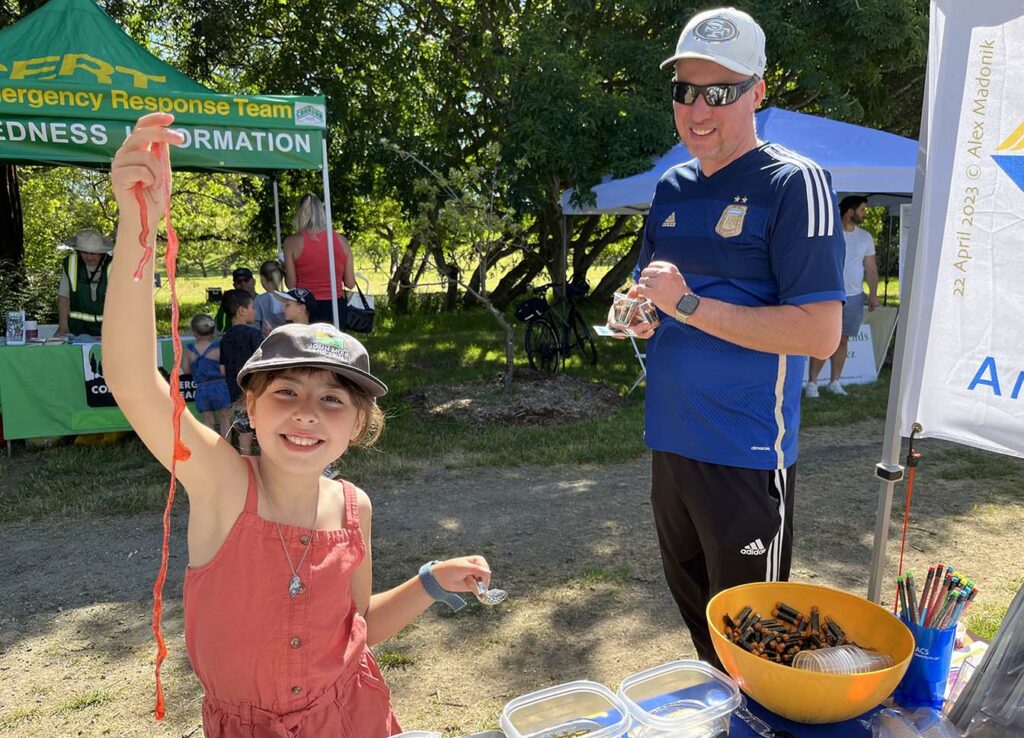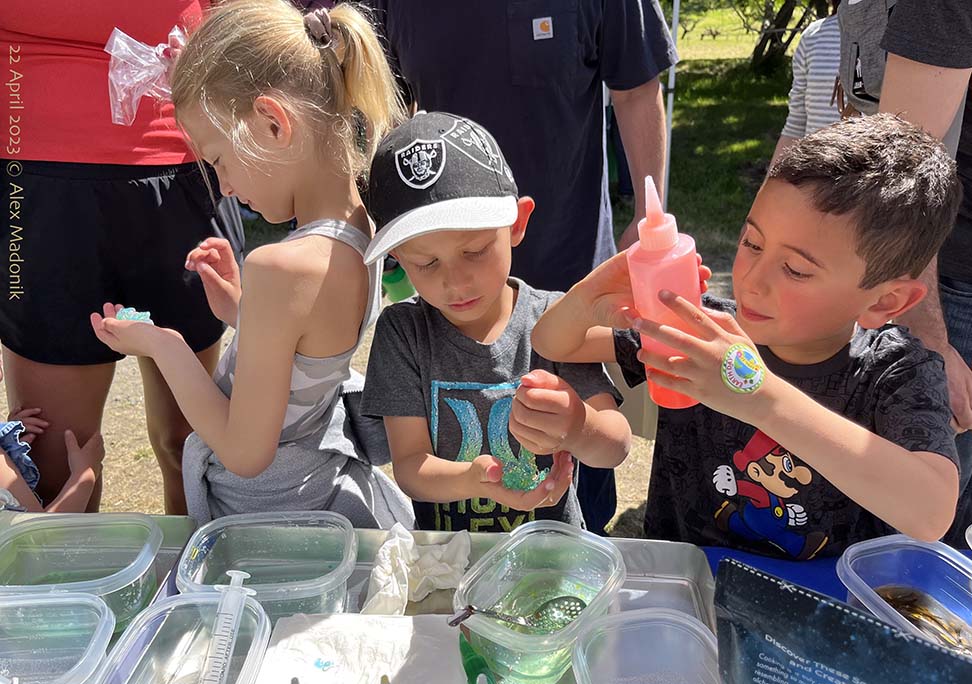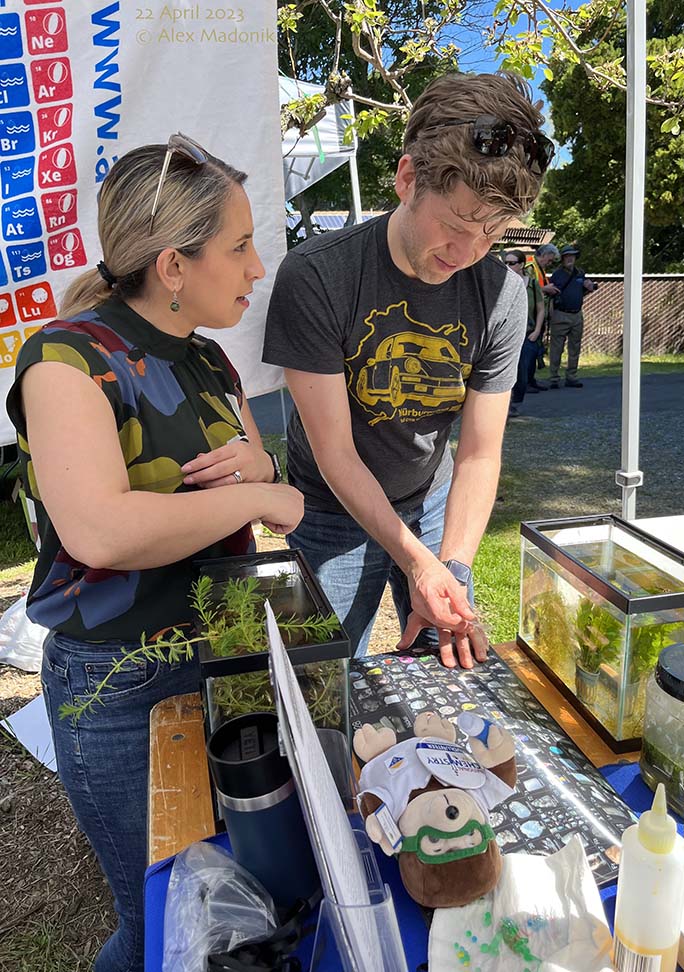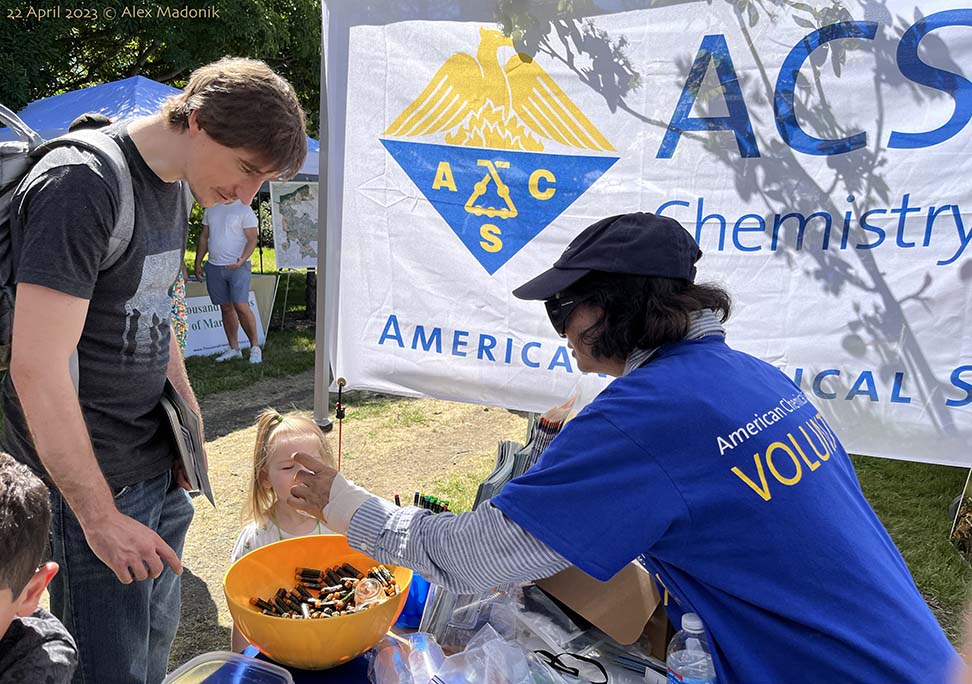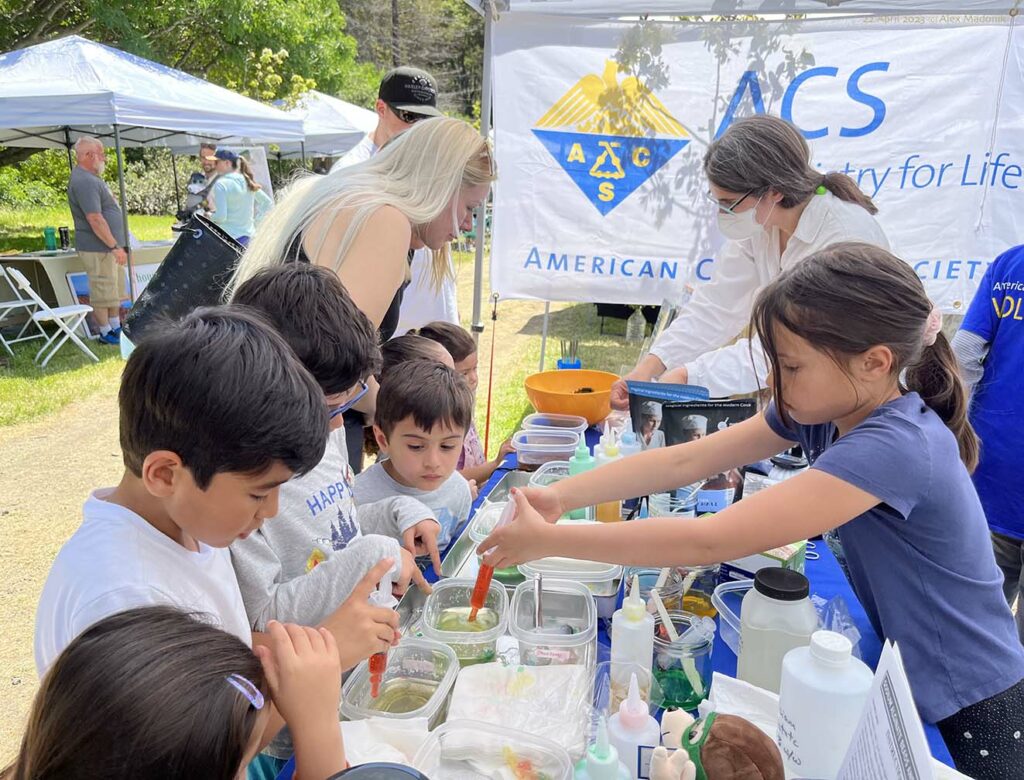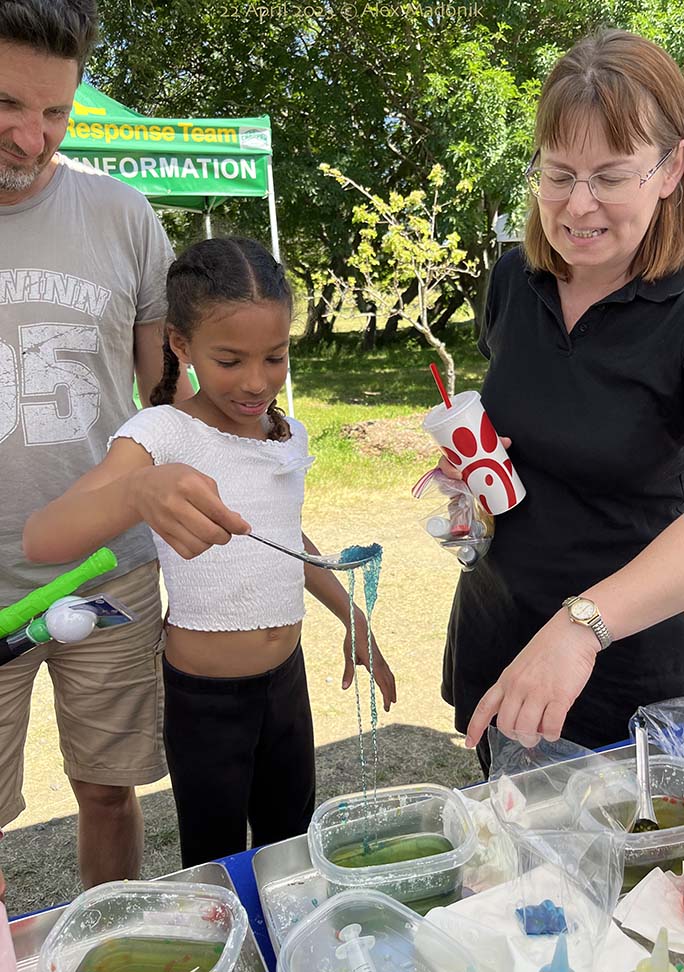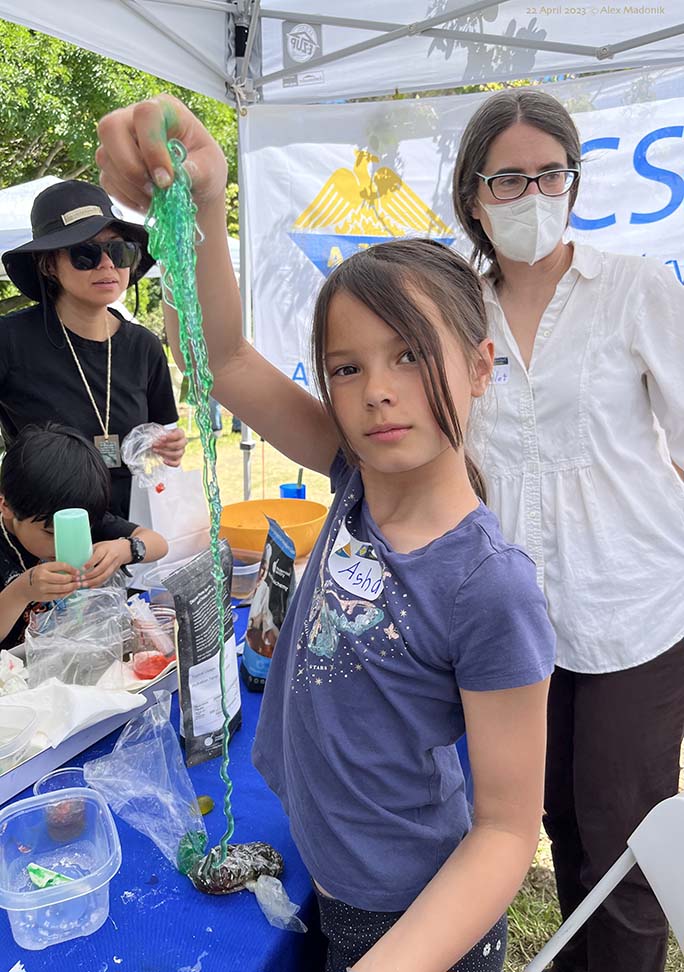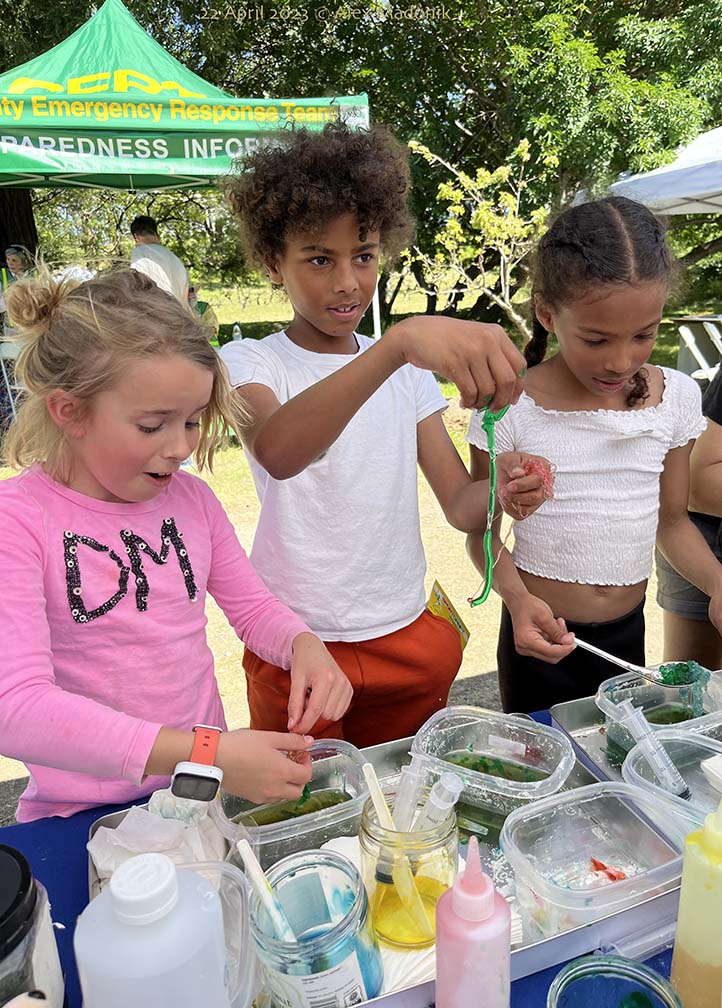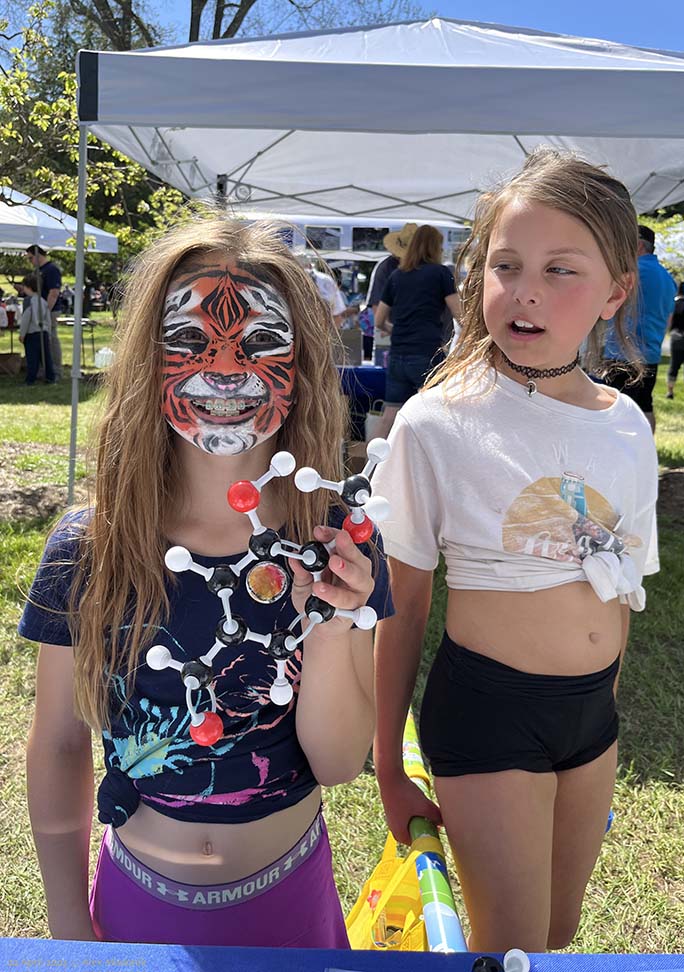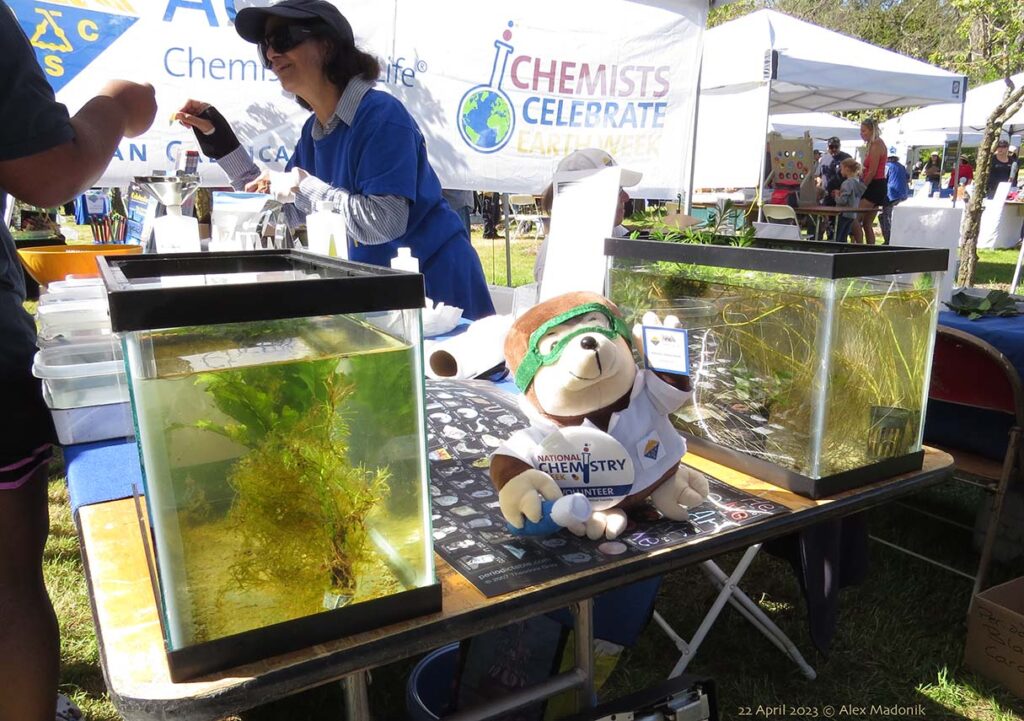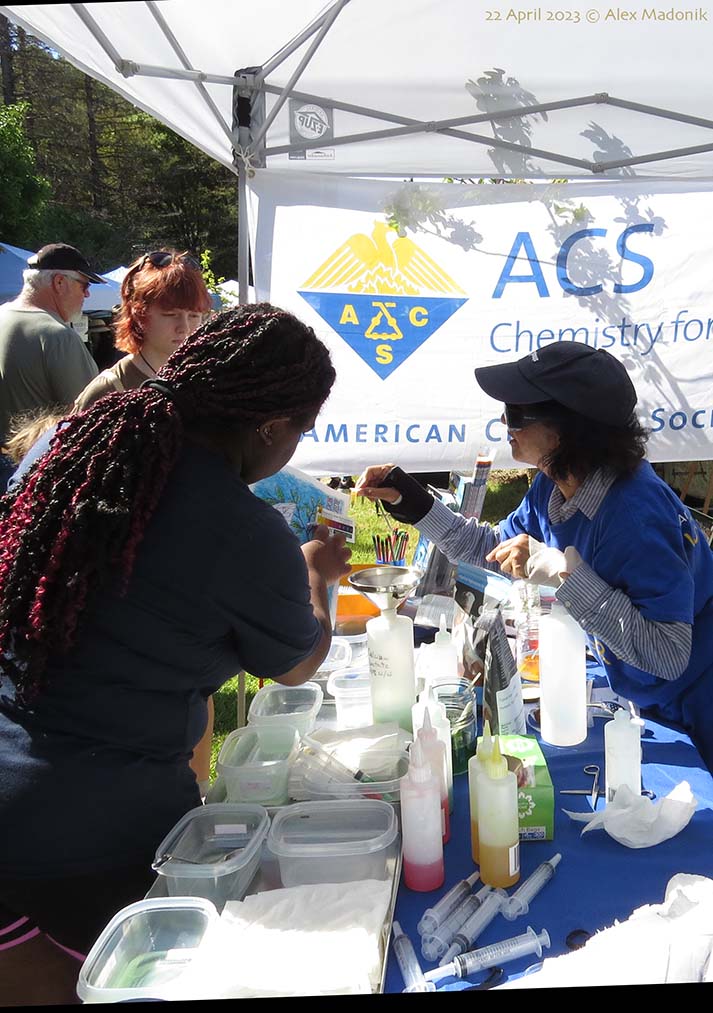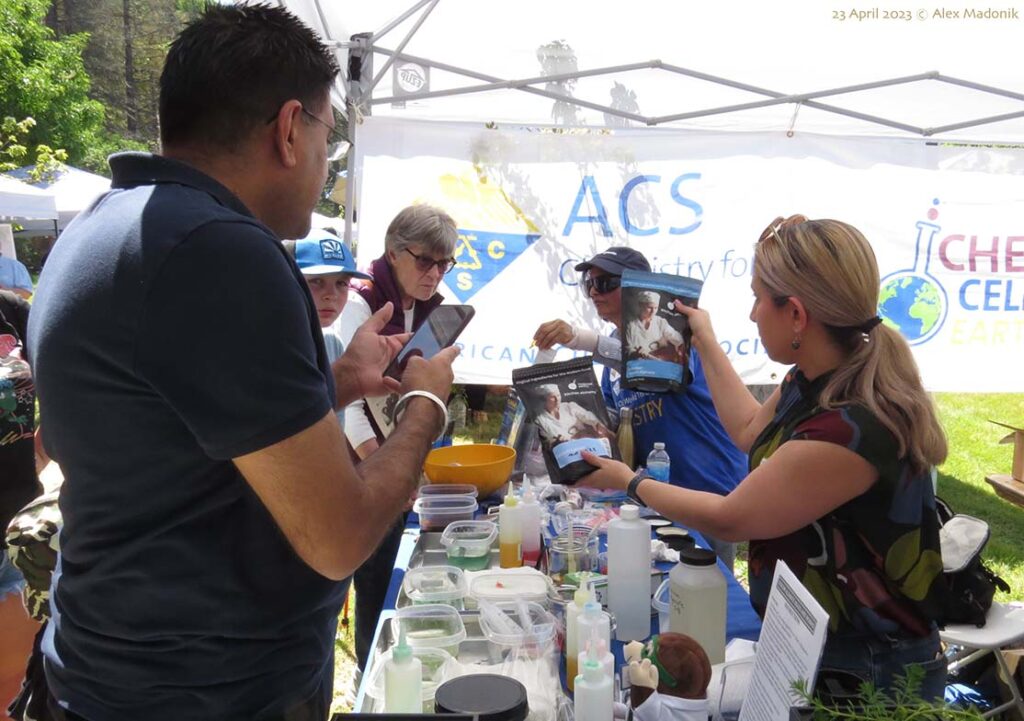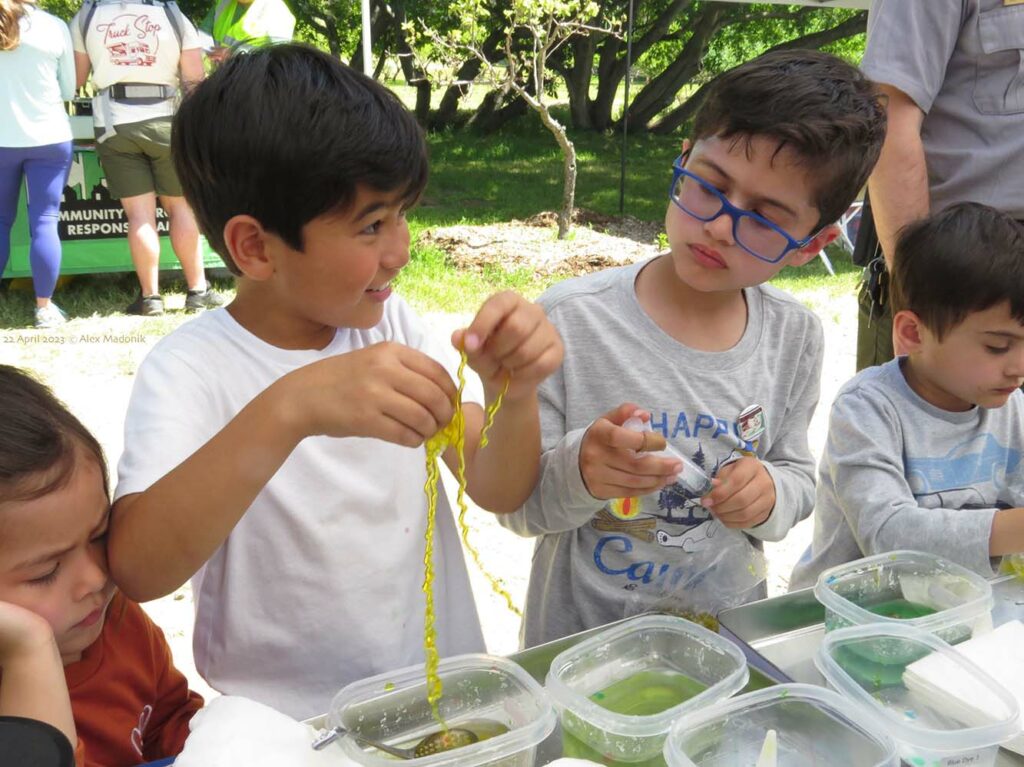Earth Day Celebration at the John Muir Historical Site in Martinez
By Romit Chakraborty
The John Muir National Historic Site in Martinez was the place to be on the 22nd of April, as the California Section of the ACS celebrated Earth Day with an array of exciting events. With the sun shining brightly overhead, the atmosphere was electric, as visitors young and old flocked to the various displays and exhibitions.
Margareta Séquin presented her ever-popular plant scents and molecular models, which provided a fascinating insight into the world of chemistry. Visitors were able to get up close and personal with these intricate structures, marveling at the complexity and beauty of the molecules that make up our world.
But it wasn’t just the adults who were drawn to the chemical displays. Kids were equally fascinated by the colorful algae on display, which provided a fun and interactive way for them to learn about the role of these important organisms in the ecosystem. They may not be glamorous, but they are found everywhere and play a key role in marine food chain, while generating more oxygen than all land plants put together.
Sheila Kanodia’s report on the algae photosynthesis demo:
April 22nd, 2023 turned out to be a bright sunny day at the John Muir Historic site: indeed a perfect day for the in vitro demonstration of photosynthesis to the young and not so young visitors to our CALACS booth. The experiment utilized small algae beads in an aqueous media in plastic microcentrifuge tubes. The media contained two pH indicators which facilitated monitoring of pH change with the progression of photosynthesis. In sunlight with photosynthesis in progress, visitors observed the color change of the media from golden yellow to purple. With the help of a pH scale/color scheme card, visitors noted the pH change from acidic to alkaline with photosynthesis and also the formation of tiny gas bubbles. The reversal of pH change in dark couldn’t be observed in real time but was shown by presenting the tube previously kept in the dark.
The process of photosynthesis involves the conversion of light energy to chemical energy by algae, plants and other organisms by transforming carbon dioxide plus water into sugars and oxygen. In our demonstration, this reaction was shown to take place by the pH change of media from acidic to alkaline. Since CO2 is acidic, with the onset of photosynthesis, the amount of CO2 in the media decreased thereby causing the pH to shift to alkaline range. The oxygen gas produced is trapped in the algae beads. With the buildup of oxygen gas the density of the beads decreased, allowing them to float to the surface of the media. Interesting visual observation and a fun experiment indeed for the kids and adults alike!
Visitors also learnt the food value of algae. Many foods in our day to day consumption already contain algae extracts. We provided algae snacks for the visitors to taste. Algae is a good source of biopolymers and biofuels in addition. Algae may provide us our ticket to the planet Mars in future as a major source of oxygen.

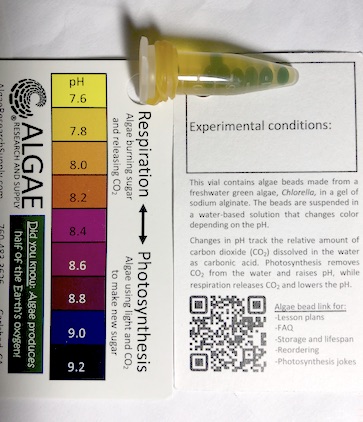

Sodium alginate details from Alex Madonik
One widely-used seaweed product is sodium alginate, a remarkable gelling agent that is found in many food products. We were introduced to sodium alginate by the Earth Week 2020 edition of Celebrating Chemistry, but the pandemic interrupted our outreach plans that year. In fact, I never opened the packages of sodium alginate and calcium lactate that I ordered that spring, and our Earth Week Coordinator (Sushila Kanodia) encouraged me to take another look at them this year. I found a very simple recipe for making gel beads and worms on the Carnegie Mellon University web site. Of course, the key is that calcium ions cross-link sodium alginate by displacing the sodium ions and bridging between two polymer strands. Food coloring adds to the fun, and dispensing the alginate solution from a squirt bottle or syringe into the calcium lactate solution creates outlandish forms instantly.
Romit’s report continues as follows:
Of course, no celebration would be complete without some great music, and the Earth Day event at John Muir did not disappoint. The Irish Folk outfit CaliCeltic kept the crowds entertained with their lively tunes, while visitors enjoyed ice cream sandwiches and soaked up the California sun.
As the festivities continued, it was clear that everyone was having a great time. Atefeh Taheri, the ACS California Chair, was on hand to ensure that everything ran smoothly, while Sushila Kanodia kept visitors engaged with her infectious enthusiasm for all things chemistry.
Another highlight was the electrolyzer set up by Alex Madonik, which used the power of the California sun to split water into its component parts. Visitors were able to see first-hand the incredible power of renewable energy, and how it can be harnessed to create clean and sustainable sources of power.
As the day drew to a close, it was clear that the Earth Day celebrations at John Muir had been a huge success. The lively atmosphere, combined with the fascinating displays and engaging activities created a lively event that had something for everyone.
But perhaps most importantly, the event highlighted the importance of conservation and sustainability in today’s world. As we face ever-increasing challenges from climate change and other environmental issues, it is essential that we all do our part to protect our planet and ensure that it remains a healthy and vibrant place for generations to come.
In this sense, the Earth Day celebrations at John Muir had served as an important reminder of our responsibility to care for the planet and had inspired visitors young and old to do their part to protect our environment. With events like this, we can all work together to create a better, cleaner, and more sustainable world.


